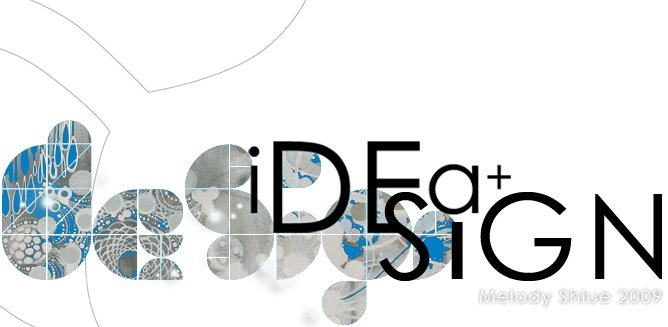Re-photoshopped poster of my Ringo Stool! Added some graphics to the seat to make it more coherent with the tessellation... I love the pattern I came up with! :)
P.S.
Ringo means 'apple' in japanese! See the connotation?
Monday, October 27, 2008
Take a Bite of My Ringo <3
Thursday, October 23, 2008
Final Presentation


Transformation
Due to Rhino restrictions my rocking chair form came down to this:

 Then I went through more thinking processes and referred to my InDesign magazines for some inspirations too. This was when I called up ManufactureLink to confirm the final design.
Then I went through more thinking processes and referred to my InDesign magazines for some inspirations too. This was when I called up ManufactureLink to confirm the final design. 

ManufactureLink.Com
I wanna recommend everyone this website I came across http://www.manufacturelink.com.au/.
It's a special service that provides expert advice in manufacturing technologies to ANYONE - yes anyone! So they are happy to talk to students as well as clients / designers who have questions they need professional critiques on. This saves trouble of calling up actual factory managers who might be busy or absent to really give you comprehensive advice.
So I called up the number (in QLD) and a guy named George Pofandt picked up. I actually called them twice because I struggled looking for suitable processes to manufacture my design. Anyway, so George helped me to resolve the following issues:
1) Thickness can hold a person's weight? I told George I am intending to use 3-5mm Mg sheets produced by the Twin-Roll Casting technology patented by the CSIRO and he said it should be strong enough even with cut out tessellation! Yay!
1) How to make the bottom bowl out of Mg sheet? After explaining the bowl structure to George and stating the manufacturing difficulties that it could occur, we came down to a solution of Flow-forming.
It's a process similar to metal spinning but of metal sheets; and because my bowl curves around the end I would need to firstly cut the sheet at a calculated size and shape and then CNC-spun around a mandrel to produce a ‘bowl’ of 1/3 of a revolution. During flow forming, the sheet metal is cold worked, changing its mechanical properties i.e. its strength becomes similar to that of forged metal. This step is repeated to produce a series of thirds and then paired up to be welded at the seams to complete the bowl component.
2) Laser cutting of Mg? George actually told me that water-jet cutting is more suitable because laser cutting is what could ignite the magnesium during the process (and you'd think Mg would react to water! But apparently not water-jet cutting.); WJC also makes finer edge finishes so no extra sanding is required! So this would be how my pattern (modelled in CAD to be read by the machine) will be cut around the sheet bowl with the multi-axial cutter to produce a metal lace structure.
3) Assembly of seat + bowl components?
Because the seat is also 3mm which sits on top of the end curve of the bowl structure, George suggested me captive nuts & screws which could be snapped on quite easily and can be done manually to reduce unecessary machine costs.
I also asked if aluminium screws are ok for contact with Mg - and he said it should be ok if the Mg was pre-protected with de-corrosion bathes.
So thanks to ManufactureLink.com I got to understand more about the various processes available in the industry now in Australia!
Tuesday, October 7, 2008
The Cycle of Re-think, Re-draw, and Re-make
During the one-week break, I went out and bought some metal shims and started cutting up the patterns for my chair design... The pieces will be welded at the seams to make a hemisphere for the rocking body. Might have to iron the metal lace beforehand though. Even though I made it out of metal sheet I actually intend it to be slightly 3D and rounded in thickness.
The pieces will be welded at the seams to make a hemisphere for the rocking body. Might have to iron the metal lace beforehand though. Even though I made it out of metal sheet I actually intend it to be slightly 3D and rounded in thickness.
However,
Due to Rina's absence, I consulted with Oya instead. I guess it's the subjective views... but what Rina liked Oya had doubts about:
Do the patterns of the seating net corresponds to the design of the magnesium body? (I explained to her about the William Morris concept, which, she thought I should simplify and abstract it down - geometry, radial, contemporary, etc.)
Then Andrew came along and questioned the following:
Does the hemispherical form really speak the rocking-chair typology? Does it confuse people in what it intuitively communcates?
Anyway, so I started re-drawing some ideas as well as looking for some existing rocking chair designs to try and understand the visual connotations...

I did come up with a better visual form, but couldn't scan it right now so gonna try and think how I am going to make it first (model + actual manufacturing process) and hopefully resolve something!!
Meanwhile Rina also introduced David Trubridge to me. He utilizes cut out pieces of wood riveted together to form really beautiful and organic products; the patterns in a way resemble what I am trying to express with the Mg malleability, so I went online and looked through some of his designs for external inspirations.
Wednesday, October 1, 2008
Stage 2: Development
So yes I went with the rock chair idea and pushed it further.
In terms of manufacturing, I tried consulting the CSIRO but no response received... so I searched around online and found a process called RPM (rubber/plastic moulding) that 3D prints urethane masters which is then used as the mould for casting molten magnesium. This could be the alternative to my unprecedented FDM rapid prototype technique if it isn't considered feasible.
Anyway, here's my poster

Photos of my very drafty sketch model made out of paper card
Plus a random sintered / stereolithographed model and 2 very lovely lamps


I think my challenge now is to make a final 'exquisite' model. Rina pointed out the thin edges that could be quite uncomfortable for people behind the knee joint - so will need to perhaps add cushion / contemplate in regards to the rubber netting and how I should attach it to the magnesium frame.










